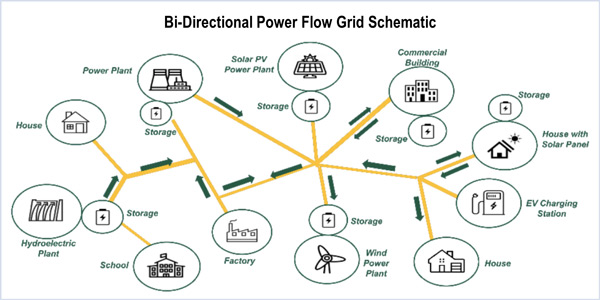RENSSELAER, N.Y. — NYISO’s Business Issues Committee on Wednesday approved steps intended to improve the efficiency of the interconnection queue process while maintaining needed reliability evaluations. The committee voted to recommend that the Management Committee approve the changes at its next meeting on Aug. 30. NYISO foresees filing associated Tariff changes with FERC in late September following Board of Directors approval next month.
Thinh Nguyen, NYISO interconnection projects manager, led an Aug. 9 presentation detailing changes to increase administrative efficiency and speed up the interconnection study process. Those changes should allow developers to move through the queue more quickly, particularly the Class Year Study phase, which evaluates the cumulative impact of a group of projects that have reached similar milestones. New rules that bifurcate the class year to allow some projects to advance have the potential to shave nine months off the phase.
The proposed changes clarify and update existing practices and procedures, except for the transmission interconnection procedures, which have already been filed with FERC and are still pending acceptance.
NYISO proposed effective dates and transitional rules that would allow projects currently in the interconnection process to benefit from the proposed changes. Proposals requiring Tariff revisions will become effective the date of the FERC order accepting the revisions, unless otherwise specified.
Market mitigation analyst Lorenzo Seirup assisted with the presentation, as did Market Manager Gregory R. Williams and Zachary T. Smith, installed capacity (ICAP) market operations supervisor.
ICAP Manual Changes for Demand Curve Reset Updates
The BIC approved ICAP manual revisions needed to reflect the process changes stemming from the ISO’s demand curve reset.
Smith presented the proposed revisions, which reflect Tariff changes that lengthen the period between demand curve resets and implement an annual update process.
The initial updates to the manual include quadrennial reviews of both the demand curve adjustment process and the annual update process. NYISO also removed language that merely repeated what is stated in the Tariff.
Changes also indicate that the results of each annual update will be posted on or before Nov. 30 of the year prior to the start of the capability year for which updated ICAP demand curves will apply. Based on a stakeholder comment at the July 27 ICAP Working Group meeting, language was added stating that NYISO will present the results to stakeholders.
NYISO Prepares DER Pilot Program Framework
The BIC also heard about NYISO’s pilot program to test the ability of the Bulk Electric System to adapt to distributed energy resources. The two-year pilot is slated to begin in April 2018.
NYISO Market Design Specialist Brian Yung presented a DER Pilot Program framework, which aims to assess the capability of DER to provide benefits to the wholesale market, develop performance measurement standards and establish and evaluate coordination between the ISO and DER aggregators.
The ISO’s DER Roadmap outlines its plans for integrating DER into its ancillary services, capacity and energy markets over the next five years and also pledges the grid operator to establish pilot programs. (See NY DER Question: Deployment or Markets First?)
The framework sets a statewide enrollment limit of 50 MW at any one time, with a maximum of 10 MW in enrolled capability serving a single transmission node. The limits are intended to minimize market and operational impacts at the node. NYISO also proposes a maximum of five individual pilot projects at any one time but will consider adjusting this limit based on staffing requirements and other factors.
The program limits individual pilot projects to a minimum of 100 kW of aggregated capability for energy and reserves, 200 kW for regulation service and a maximum of 10 MW of aggregated capability — and sets a 12-month cap on project duration. NYISO can either extend or stop an individual project to meet program objectives.
Resources participating in the wholesale markets — except for demand-side resources — will not be eligible to participate in the pilot program. NYISO will review wholesale market demand-side resource participation on a case-by-case basis to ensure the resource can meet its existing wholesale market obligations while participating in the pilot.
The ISO will select proposed pilots based on how well they can demonstrate energy and/or ancillary services, blend of resource types, technology maturity, DER and aggregation deployment experience, and testing availability. Preference will be given to proposals that can meet the desired six-second telemetry scan rate. The program will focus on testing the technical capabilities of aggregations rather than price signaling, NYISO said.
One market participant recommended that the grid operator work with the New York State Energy Research and Development Authority to market the program. Others said that a highly public rollout would improve the success of the program, and that the ISO should make clear whether the program includes aggregated storage.
— Michael Kuser




